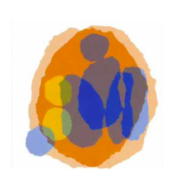Psychoanalytic supervision and consultancy: promoting containment and support in institutions
Abstract
In conjunction with personal analysis and theory/technique seminars, clinical supervision represents one of the three pillars of psychoanalytic training. Since several years, however, ‘supervision’ is also a term which describes consulting for staff groups in health and social institutions, a practice standing at the crossroad between training and consultancy, offered to teams more and more heterogeneous and involved in an often confused network of related services. The Authors developed their hypotheses by reflecting about their work as consultants/supervisors providing staff support systems within various institutions. The first part of the paper focuses on similarities and differences between individual and institutional supervision, with particular attention to clinical supervision, experiential team building, organizational development, and the issues involved in the relationship, overlapping and conflict among training, support and administrative functions. The second part examines the notion of institutional container, word which has become a magical passepartout in healthcare organizations. The AA explore the functions implied by such notion in the light of: Winnicott’s concept of ‘holding’; Pichon-Rivière and Bleger’s concepts of ‘deposit’ and ‘context’; Bion’s theory of container/contained; Abadi’s paper on paradigmatic shift from the boundary to the network. The last part discusses how the so called ‘managed care’ has indeed created new institutional scenarios. The AA look at the analysis of Bauman and Sennett and reflect on how new organizational models modify the containing function of institutions, lower their capacity to create links and deal with system anxieties, allowing primitive turbulent group and intergroup dynamics to impact on productivity and wellbeing. While organizations are progressively becoming boundaryless, networked and porose systems, relatedness and loyalty become less important, and mobility and turnover are so fast to impede a healthy and mature attachment to work, people and the cultural values of one’s organization. Drawing from case studies, the AA will formulate three hypotheses. The first one is that whithin turbulent and weakly connected social contexts both the offer and the demand for institutional supervision become ambivalent and ambiguous. Ambivalence is bred by the environmental insecurity, the resistence to learning and the fear of the responsibility for knowing (-K, Bion), while ambiguity refers to unsafe boundaries between person, role and organization, or dilemmas involving control/support and professional/managerial interfaces. The second hypothesis is that when managers employ a supervisor in order to ‘improve’ the system outcome and to ‘check on’ people’s work, the emotional pressure on the staff is such that supervision becomes the support system. Supervisors also are under pressure, having to deliver the care that organizations stopped to provide their employees with. Between desire for therapy and unionistic claims, the staff greedily competes with the clients for attention, and often gets stuck in the Ba dependency, hoping to find in the supervisor an idealized manager and a source of “salvation” instead of an agent of “revelation”(cfr. Lawrence). Such regression often results from the management’s policies, as supervision/training/consultancy may be unconsciously called in by managers as a sort of prosthesis to underpin their threatened leadership. A third hypothesis refers to a paradigm shift in the consultants’ perspectives: the necessity to face change as a fact of life. In our economically developed countries we do live in a less certain and safe environment; network systems, diversity, liquidity, globalization are visions of reality supported by and intertwined with the latest scientific and technological developments. Bion’s basic assumptions, and the concepts of one-ness and me-ness, are immensly helpful in understanding group dynamics; but consultants now have to find a stance, and the skills, which enable them to ‘swim’ together with their clients in the present sea of complexity and turbulence.







